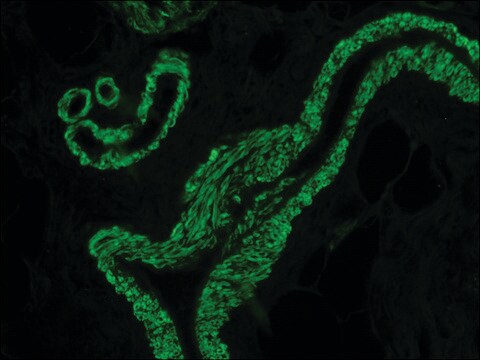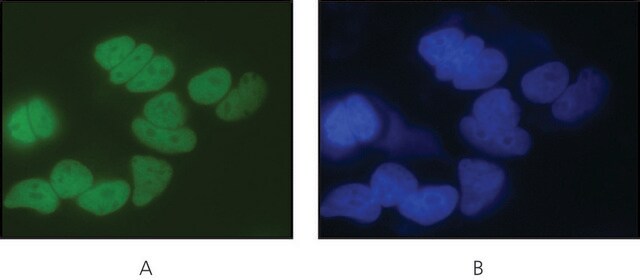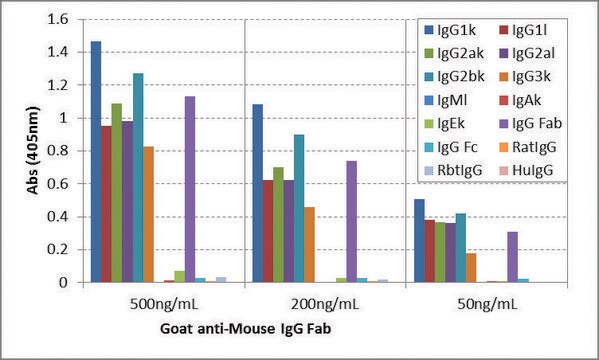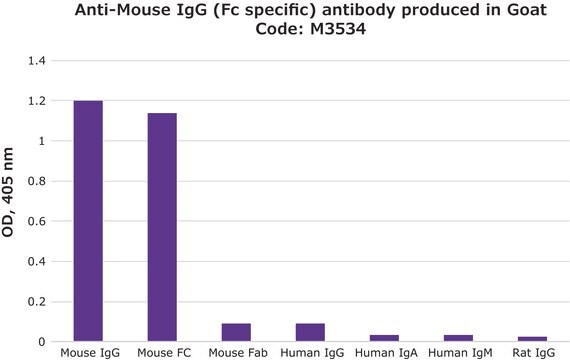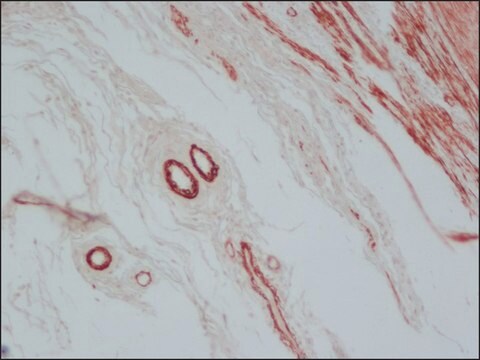M0659
Anti-Mouse IgG (Fab specific) F(ab′)2 fragment antibody produced in goat
affinity isolated antibody
Synonym(e):
Anti-Mouse Fab Fragment, Fab Specific Detection, Goat Anti-Mouse IgG Fab
About This Item
Empfohlene Produkte
Biologische Quelle
goat
Qualitätsniveau
Konjugat
unconjugated
Antikörperform
affinity isolated antibody
Antikörper-Produkttyp
secondary antibodies
Klon
polyclonal
Konzentration
2.0 mg/mL
Methode(n)
indirect ELISA: suitable
Versandbedingung
dry ice
Lagertemp.
−20°C
Posttranslationale Modifikation Target
unmodified
Allgemeine Beschreibung
Anti-Mouse IgG (Fab specific) F(ab′)2 fragment antibody is monospecific as determined by immunoelectrophoresis versus normal mouse serum, mouse IgG and the Fab fragment of mouse IgG. The antibody does not react with the Fc fragment of mouse IgG. Moreover, no reactivity is observed with human κ or lambda light chain, IgG, IgA, IgM, IgD and IgE, bovine IgG and IgM, or horse IgG as determined by ELISA. In immunoelectrophoresis, the antibody preparation is found to consist only of the F(ab′)2 fragment of goat IgG, where specific antisera is applied to goat IgG fragments. No contamination with goat IgG whole molecule is observed.
Immunogen
Anwendung
Sonstige Hinweise
Physikalische Form
Haftungsausschluss
Sie haben nicht das passende Produkt gefunden?
Probieren Sie unser Produkt-Auswahlhilfe. aus.
Lagerklassenschlüssel
12 - Non Combustible Liquids
WGK
nwg
Flammpunkt (°F)
Not applicable
Flammpunkt (°C)
Not applicable
Analysenzertifikate (COA)
Suchen Sie nach Analysenzertifikate (COA), indem Sie die Lot-/Chargennummer des Produkts eingeben. Lot- und Chargennummern sind auf dem Produktetikett hinter den Wörtern ‘Lot’ oder ‘Batch’ (Lot oder Charge) zu finden.
Besitzen Sie dieses Produkt bereits?
In der Dokumentenbibliothek finden Sie die Dokumentation zu den Produkten, die Sie kürzlich erworben haben.
Kunden haben sich ebenfalls angesehen
Unser Team von Wissenschaftlern verfügt über Erfahrung in allen Forschungsbereichen einschließlich Life Science, Materialwissenschaften, chemischer Synthese, Chromatographie, Analytik und vielen mehr..
Setzen Sie sich mit dem technischen Dienst in Verbindung.


